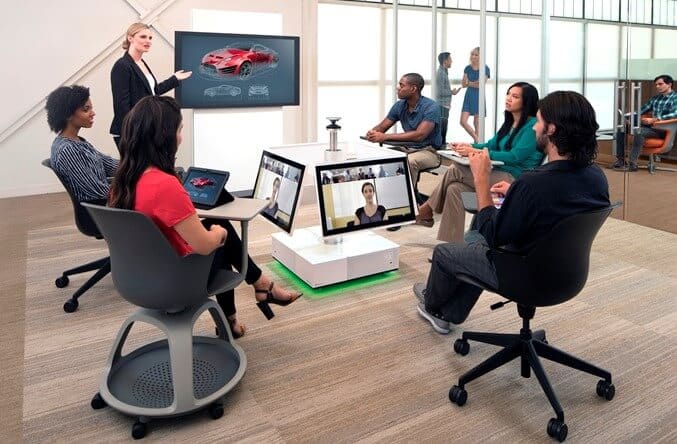
Collaborate, integrate, communicate
Over the course of the past decade, technology has transformed the workplace. The cloud and smartphones have empowered flexible working and mobilised workforces, re-inventing the concept of ‘the office’, and transforming the ways in which we communicate.
Gone are the days of faxes, pagers are almost solely the preserve of doctors, and even the humble Post-it is a rare site in many offices today. Workers now have access to a myriad of channels with which to speak to colleagues or customers – from Skype to Meetupcall and Zoom.
However, the number and complexity of tools can hinder rather than help productivity. How many times have you tried to use a conferencing service and find your line cutting out mid-conversation? Or experienced a Wi-Fi blip which takes down the office’s IP-based comms? Or heard colleagues’ complaints about how tech is replacing face-to-face, visual communication?
What’s the solution?
Babel recently started working with collaboration giant Polycom, meaning the topic is undoubtedly front of mind. Polycom hosted a Women in AV event back in May, and during the evening we learned that 93% of human communication is comprised of non-verbal signs. As a result, face-to-face engagement, either in person or via video, is really important to get the best out of discussions and encourage wider team participation.
According to recent research, 92% of businesses believe that video collaboration technology helps improve relationships and fosters better teamwork. Visual collaboration helps satisfy our craving for human contact, yet also gives us – as a workforce – more freedom to work when, where, and how we want. Almost all (92%) of respondents to the same survey agreed that an ‘anywhere working’ approach boosts productivity, as people can choose to work where they are most efficient – a view supported by Babel, where we have a flexible working policy.
Video may not completely replace face-to-face, as introductions to clients and in-person meetings with colleagues are still an important part of relationship-building. But adopting more advanced collaboration tech gives businesses the freedom to mix virtual communication with real, reducing the demands on colleagues and clients to factor in the travel times and costs required for regular meet-ups.
Of course, technology like fully-immersive studios, and VR/AR-powered conferencing will be out of reach for many businesses at present, but this is what the future of work will look like. An in-person tour of Polycom’s immersive studio was a fantastic experience (a virtual tour is available online), and as costs for hardware and software fall, and connectivity infrastructure improves, this exciting future will no doubt become widely accessible.
In the meantime, a gradual approach to integrating (less advanced) collaborative tools will help prepare teams, ease IT issues, and ready those staff who are perhaps more reluctant to swap face-to-face meetings for digital alternatives. Working in PR, we understand and value face-to-face human communication. Working in technology, we’re also aware that digital transformation is altering how we communicate. A measured, intelligent approach to integrating technology is needed to foster collaboration, give workers more freedom and ultimately boost a business’s productivity.





